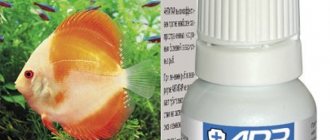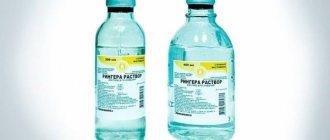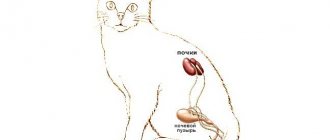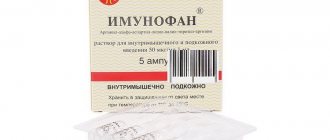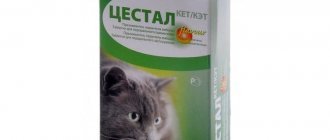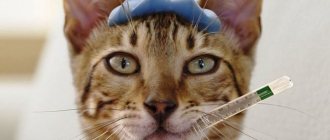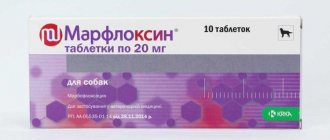If an infection of a fungal or bacterial nature occurs in the aquarium, urgent measures must be taken.
One of the best means to combat such phenomena is malachite green. It is effective against pathologies such as ringworm, ichthyophthyriosis, and fin rot. Although safe to use, it should still be used with caution due to some limitations. Read more: treatment of ichthyophthyriosis in aquarium fish.
The drug “Malachite Green” helps to cope with fungus and bacteria in the aquarium
Description of the solution
The treatment solution includes various components in balanced quantities. Each bottle contains 50 ml of the drug. The composition of malachite green is extremely simple. The antiseptic does not contain zinc and arsenic; it consists entirely of a substance with the same name. 10 mg of dissolved drug is designed for an aquarium with a capacity of 100 liters. The cap contains 5 ml of solution. It can be used as a measuring container. One such cap is used for 10 liters of water.
Read more: treatment of fin rot in aquarium fish.
According to its characteristics, it is a stable dye. Accordingly, upon completion of work with the drug, it is necessary to restore the color of objects present in the reservoir. For this purpose, an activated carbon filter is installed.
The drug is not suitable for use in aquariums where fry or small fish species live.
If the aquarium is inhabited by invertebrates and ornamental plants, then malachite green can be used without fear. But when fry and fish without scales swim in the water, its use is unacceptable.
Based on a synthetic dye, you can prepare various preparations for aquarium fish. They are effective in controlling protozoa that cause invasive diseases. For small aquarium fish, it is better to use alternative medications. But if you can’t do without malachite green for your aquarium, you should reduce the dosage by 2 times.
Treatment
Malachite green is intended for labyrinthine and viviparous fish. The substance is effective in the fight against protozoan ectoparasites that cause fatal diseases in fish. The aquarium medicine is used in the form of a solution. To eliminate parasites in a common vessel, dilution in water with copper sulfate is allowed.
What diseases can be cured
The drug relieves aquarium pets from diseases:
- fin rot;
- dermatomycosis;
- trichodiniosis;
- ichthyophthyriasis (“semolina”).
As well as a number of other invasive diseases, during which parasites infect the external and internal tissues and organs of fish.
What kind of fish is it suitable for?
The drug is used to treat adult fish covered with scales:
- veiltails;
- guppy;
- mollies;
- analysis;
- gourami;
- barbs;
- swordtails;
- Shubunkins;
- playfairy.
It is possible to treat scaleless aquarium fish if the dose is halved, but if you lack experience, it is better to use other means.
Use in a general aquarium
In addition to malachite green, other preparations can be used for fish living in a community aquarium. For every 10 liters of water you should take:
- 5 drops of copper sulfate;
- 5 ml green malachite for aquarium.
In addition to treating aquarium fish, malachite green is used as a coloring indicator in microscopy.
The finished solution is poured into a glass vessel with a capacity of 250 ml, without plants and soil, and diluted with settled water. The mixture must be added to the aquarium periodically. This is done in three steps, every 30 minutes. The water is carefully mixed. For the entire treatment period, the temperature of the liquid in the container is increased to 28 degrees Celsius. At this time, you cannot leave a biofilter with activated carbon in the aquarium.
Treatment continues for 30 days. The prepared solution is updated from time to time, the best option is every 10 days. If the water has been partially renewed, it is necessary to restore the concentration of the medicinal product.
The water where the individuals are placed must be fresh and have a pH in the range of 5.5-6.8 . Typically, fish with pronounced signs of disease are selected. After releasing them into the medicinal solution, you should not leave them alone. During the first 30-50 minutes, you need to monitor the condition of the individuals. If they behave normally, you can transfer the rest of the brothers to them. If the fish begin to swim from corner to corner and behave restlessly, it is necessary to gradually add fresh, settled water. At some point, they will begin to behave quietly, which will indicate that the concentration of the medicinal product has been correctly selected.
Description of the medicine
In its pure form, malachite green is a crystalline substance of greenish or yellow color with a metallic sheen. Easily dissolves in water. You can purchase conditioner with or without zinc. A widely used medicine produced by “Zoomir” is a convenient package equipped with a measuring cap that holds 5 ml of the drug.
Composition and release form
Conditioner "Zoomir" is available in 50 ml volumes. The composition contains 10 mg of malachite green. A full bottle of conditioner can be used to treat a 100-liter aquarium.
Application and dose
When using, you must follow the instructions included with the drug. It is recommended to separate healthy fish from infected ones. For a convenient arrangement of therapeutic baths, it is desirable to have a quarantine aquarium.
The first two days, the concentration of the treatment solution is calculated using the formula 5 ml per 2 liters of water, and in the following days, 5 ml of the drug is added for every 1.5 liters of water. The fish are kept in the solution for 5 hours, then placed in clean water. Aeration should be constant, water temperature should be between 24–28 degrees, and pH should be from 5.5 to 7.
It should be borne in mind that in alkaline and too warm water the solution becomes toxic and can cause poisoning in aquarium pets. Periodic water changes of 25% are performed. For each new procedure, a fresh solution is prepared.
Use in an aquarium with sick and healthy fish requires a lower dosage: for every 10 liters, 5 ml (one cap) of the drug is added. In both the quarantine and general aquariums, the water temperature is increased to 28 degrees.
For the purpose of prevention and treatment, you can prepare a solution using copper sulfate.
For a 10-liter container, mix 5 drops of copper salt and 5 ml of malachite green, then dilute in 250 ml of clean, settled water. The combined solution is divided into three equal portions and poured at intervals of 20–30 minutes. Treatment is carried out every week for a month, if necessary, the period is extended.
Storage conditions
The drug should be stored in a dry, dark place at room temperature. Shelf life - no more than 24 months. If the air conditioner is exposed to cold temperatures, sediment will form. In this case, you should warm the contents of the bottle to room temperature and shake well.
special instructions
The drug is intended only for adult scaly fish. The dosage and treatment schedule and water parameters should be strictly observed. During treatment, fish require increased attention.
Contraindications and side effects
It is not permissible to use it in a container inhabited by young fish and fry. Do not use the conditioner together with other drugs containing such a substance, as this will lead to an increase in dosage and subsequent poisoning of the fish. No side effects on the condition of the fish were observed. There is a temporary green coloring of the water and some decorations.
In a quarantine container
A quarantine aquarium is an aquarium where fish are placed for a certain period of time. These are sick individuals who undergo treatment for 4 days. The duration of the procedure is about 5 hours daily. In the first 2 days, they prepare the medicinal composition:
- Pour 2 liters of water into a container.
- Dissolve 5 ml of malachite green in liquid.
The dosage is gradually increased for 3-4 days. Traditional 5 ml is poured into 1.5 liters of water. Fresh solution must be prepared daily.
In the quarantine container, the temperature of the liquid should be maintained at +25 degrees. Continuous aeration of the water should also be ensured.
Description of the air conditioner
Malachite green is a liquid with a green tint. Available in 50 ml plastic bottles. The concentration of the main substance is 10 mg. One package of concentrate is enough to treat animals in a tank with a volume of up to 100 liters. 5 mg of medication is consumed per liter of water. The conditioner is measured using the cap included in the kit.
Watch a video about what kind of medicine this is and why it is needed.
Precautionary measures
The drug should be used exclusively for its intended purpose, strictly following the instructions. As soon as the need for use disappears, you need to put it in a cool, dark place , away from food products. This area should also be inaccessible to children and pets.
To treat the fish, place them in a separate aquarium with a medicinal solution.
While working with the composition, you should not eat or smoke. When using malachite green, the instructions should be strictly followed. If the medication gets on your skin, rinse it thoroughly with water.
Aquarium water conditioner retains all its characteristic properties after freezing and thawing. If stored at low temperatures, sediment may form. To dissolve it, before use, warm the product to room temperature and shake well.
Instructions for use and dosage
The sanitation process for home and community aquariums has some minor differences.
There are two ways to use conditioner:
- In aquarium;
- In a separate container.
The drug relieves aquarium fish from the following diseases:
- Fin rot. The disease destroys fish fins, causing shortening and ulcers. If treatment is not timely, the animal dies. The bacterium can get into the aquarium with water or soil;
- Ichthyophthyriosis. The body of the fish is covered with white lumpy grains, similar to semolina. Hence another name for the disease – “semolina”. Infected fish constantly rub against the ground or decorations.
In a separate container
The total duration of the water treatment or prevention process is at least four days.
On the first and second days, it is necessary to make a disinfectant solution in a minimum concentration. The proportions are 0.5 ml of malachite green per 1000 ml of fresh, settled water. In the next two days - 0.7 ml for the same volume of liquid.
The temperature of the solution for sanitizing the aquarium and fish should be approximately 23-25 degrees above zero. The water must be acidic. Otherwise, the drug loses its disinfectant properties. The fish must be kept in the solution for at least 4-5 hours.
When carrying out the disinfection procedure, it is necessary to use a new solution of malachite green each time.
When carrying out the disinfection procedure, it is necessary to use a new solution of malachite green each time
In a common aquarium
To disinfect common containers, copper sulfate is added to the solution. For every 5 liters of water - 1 ml of malachite green and 1 drop of copper sulfate. The mixture of drugs must be infused in a glass, and then poured, divided into three parts.
It is recommended to add the product in small doses every 30 minutes.
In order for the drug to dissolve well in water, aeration in the aquarium must be turned on during treatment.
The sanitation course in a large container should take place at a temperature of at least 28 degrees. Total duration – 4 weeks. Disinfection should be carried out every seven days.
It must be remembered that the medicine is a permanent dye. After its use, the water in the aquarium retains a greenish color for a long time. To clean, you must use an activated carbon filter.
Malachite green
Stylab / Catalog / Antibacterial drugs / Malachite green
Malachite Green Plate kit test systems for the quantitative analysis of malachite green in products of the fishing industry, including fish, caviar, mollusks and crustaceans.
| Enzyme-linked immunosorbent assay (ELISA), strip plate | Malachite Green plate kit |
| 5161MGT Malachite Green Total ELISA |
Malachite green (benzoylgrun, malachitegrun) is an inexpensive substance that is used to dye fabrics, paper and leather. Previously, malachite green was used as a food coloring, but due to the toxicity of this substance, its use was limited in many countries. According to the international classification, malachite green has hazard class 2 (highly hazardous substance).
Malachite green is toxic to many organisms, including bacteria. Therefore, since the 1930s, it has been used to prevent and treat fungal, parasitic and bacterial infections in fish, eggs, crustaceans and molluscs. It effectively destroys Saprolegnia, an organism that causes wound infections in fish and can attack eggs.
Both malachite green and leucomalachite green are dangerous to many living organisms, including mammals. Both of these substances can cause liver damage. They are mutagenic, cause chromosomal abnormalities and are suspected carcinogens. In studies on fish and rats, malachite green was teratogenic. It caused damage to the spleen, kidneys and heart, as well as pathological changes in the skin, eyes, bones, lungs and thyroid gland.
In Russia, malachite green is used by aquarists. In the European Union and the USA it is prohibited to use it in fish farms. Canada has established a maximum permissible level of malachite green in fish products. However, malachite green is cheap and has a very broad spectrum of effects. Therefore, it continues to be used in many countries. In some states its use is officially permitted, in others malachite green is used illegally.
Malachite green can enter the water and, consequently, the bodies of fish, crustaceans and mollusks, not only through intentional use. This substance is widely used in industry, including for the production of printing inks, which is why it often ends up in wastewater. If they are not properly cleaned, malachite green will end up in the body of water. In an aquatic environment, this substance is quickly adsorbed by particles of soil and silt. It is assumed that in water this substance is destroyed mainly during photolysis. If malachite green is in the sedimentary layer, its photolysis will be difficult, and the processes of hydrolysis and biodegradation are of little significance for the destruction of this substance in the aquatic environment. The bioaccumulation potential of malachite green is low, but in living beings, including fish, it is metabolized to leucomalachite green, which is highly soluble in fats and remains in body tissues for up to several months.
The problem of purifying wastewater and reservoirs from malachite green is currently very relevant, as is the problem of analyzing this substance in water, as well as in fish and shellfish.
To determine malachite green, it is convenient to use the enzyme-linked immunosorbent assay (ELISA). It is widely used for screening purposes and in laboratory practice. This method is included in GOST 57025-2016 (“Fish, non-fish objects and products from them. Enzyme immunoassay method for determining the residual content of triphenylmethane dyes”), which came into force on July 1, 2017.
Literature
- Terry D. Bills, Leif L. Marking, and Jack H. Chandler, Jr. Malachite Green: Its Toxicity to Aquatic Organisms, Persistence, and Removal with Activated Carbon. United States Department of the Interior Fish and Wildlife Service, Washington, DC 1977
- Culp SJ, Beland FA, Heflich RH, Benson RW, Blankenship LR, Webb PJ, Mellick PW, Trotter RW, Shelton SD, Greenlees KJ, Manjanatha MG Mutagenicity and carcinogenicity in relation to DNA adduct formation in rats fed leucomalachite green. Mutat Res. 2002 Sep 30;506-507:55-63.
- Mohammadi A, Daemi H, Barikani M. Fast removal of malachite green dye using novel superparamagnetic sodium alginate-coated Fe3O4 nanoparticles. Int J Biol Macromol. 2014 Aug;69:447-55
- Shivaji Srivastava, Ranjana Sinha, D. Roy. Review. Toxicological effects of malachite green. Aquatic Toxicology 66 (2004) 319–329
←Return

